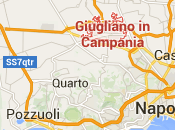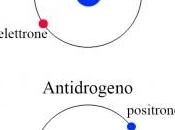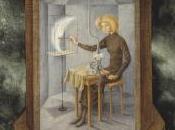Magazine Scienze
Antonio Bruno *
The fig tree was very important in Salento Lecce so that the permanent secretary of the Economic Society of Otranto, Mr. Gaetano Stella, in his report read in general assembly on 30 May of 1841 states ".... The industry of dried figs in the Province of Lecce is very widespread, and is the subject of extensive trade, so that the sum is the care of the fig tree should have. Hence much use has been a perpetual memory of that tending to demonstrate Mr. Secretary, is not necessarily the caprification, as is commonly believed to, for many varieties of figs, imperocchè those who want to follow its precepts, in line with those of the best agronomists across Europe, will get not only save costs and effort, but also engaging in the kind many figs caprification that the injury keeps you would much grow the collection of this fruit. "
That curiosity! A practice which includes the permanent secretary of the Economic Society of Otranto, Mr. Gaetano Stella?
Comes to the rescue of the meetings and de'lavori Report of the Royal Academy of Sciences of Naples, four years after that of 1845. In these meetings Vincenzo Semmola about the maturation of the fig tree quotes Theophrastus and Pliny who wrote: "figs planted in coupling the streets do not need caprification" And in this context refers to "the practice held by this' a good spread of Lecce About untimely figs over the dust of the streets where the procession passed both of Corpus Christi "
Well my curiosity was satisfied that my research has found documents that contained a response.
But more about figs, I have a curiosity that has not found satisfaction that remained unanswered about the quote from the prof. Giacinto women, studies of Joseph Guglielmi. Women reported that William has studied the fig tree in Lecce and reports production data, which is assumed to be part of a publication edited by the same William, and which I reproduce below
Variety Productions annual 5 years 20 years Kg Kg Kg from 20 years onwards
Black fig tree for every two 8 50 100
Crazy for a fig tree every 9 55 75 80
Optatus a fig tree for every 8 45 80
Fico hairy one tree for every 10 40 80
I have tried in the Provincial Library publication above without success. For if you hold this publication? Hey, tell it to you, I just know you read and where you read it! If your answer is yes, then call me, because I'm curious to read it! But most of all I tried to know who Giuseppe Guglielmi, why he had undertaken the study of Fico in Lecce but I have not really found anything and none of the colleagues I have consulted has ever heard of, although a partial answer comes from a piece of prof. Women reported in another publication. Professor Donno about Joseph Guglielmi writes: "William, who pursues the study of industrial farming (the fig ed) of Lecce, neglects to highlight the bifera varieties studied.
The word derives from bifera bifera which in turn derives from the Latin word Biferum which is composed of a (twice) and the word re-fer (lead). It is said that the plant produces fruit twice a year as in the case of certain varieties of fig that in addition to the production of figs is also one of the early figs.
While continuing to read the notes of prof. Women of them were written that Joseph Guglielmi studied Fico Fracazzano White, black fig, the fig Optatus the Albanega Fico, the Borsamele Fico, Fig Cup, the abbot and Fico Fico Fara. But the same women do not report on the studies of Guglielmi cool and crazy hairy fig varieties.
I did a search and reading the publication Porticense Herbarium (Herbarium of the Faculty of Portici Royal Agricultural College), prepared by Anthony De Natale, I learned that only a part of the collection Guglielmi, called Figs of Lecce and dated 1908, in Portsmouth, I wonder who has the missing part, also in the publication edited by the Faculty of Agriculture, University of Naples reads:
"The collection of Joseph Guglielmi you do not have signs or as to the date of acquisition by the Royal School of Agriculture of Portici, nor the author of erborizzazioni.
Guglielmi collection should go back to the early 1900's, at that period are other studies from the Royal Botanic extraction Agronomic School of Agriculture, as the study on the history, phylogeny and systematics of the races of common bean Orazio Comes, the cottons Angelo Aliotta, rays of olives grown in the south of Italy by Mario Marinucci, the hay of natural grassland in southern Italy Alfredo Pugliese,
study on wheat varieties and the one on almond Italian Vincenzo Barrese.
The collection of figs of Lecce is certainly an integral part of a study to define the anatomical features of the different varieties of figs in the area of Lecce. For each sample, in addition to dryness, shows the design outline of a leaf type and longitudinal section of fruit with related measures, such as the maximum width of the leaf and the leaf lobes. The name of the crop does not follow the rules of scientific nomenclature, but it is expressed in Italian, such as Neapolitan Fig. On the other hand in the past, especially for crops that are not of specific entities, very often he used the Italian name. Dehnhardt Francis himself, the head gardener of the Royal Botanical Gardens of Naples, director of the Royal Gardens of Capodimonte, the Villa Floridiana and botanical garden of the Earl of Camaldoli Vomero (Villa Ricciardi), in the preparation of the catalog of the plants were grown in 'Eucalyptus camaldulensis Horti the names of the cultivars in Italian.
Orazio Comes counts (1906) also present among the various collections in the herbarium, Joseph Celi on the various cultivars of figs grown in southern Italy. Through a comparison of the findings of the Guglielmi Collection with the scientific work published by Celi (1908) it was found that the file kept in the herbarium Comes, is a part of samples Celi examined and used to compile the scientific publication. Guglielmi collection is, therefore, the only surviving portion of the objects belonging to the much larger collection of races that figs were cultivated in southern Italy. "
I know there are many scientists who read my notes and to which I humbly beg to enlighten me, I do because in this way will finally satisfied my curiosity. If my curiosity is bound to remain unfulfilled is because, as the author Antonio De Natale, scientists del Salento Lecce and Bari, Faculty of Agriculture, have no signs or as to the Guglielmi Collection of the Races of fig Lecce viewed at the Faculty of Agriculture, Portici, nor on the same page of Giuseppe Guglielmi erborizzazioni.
In the latter case, I hope that, having put on paper the results of my research on Joseph Guglielmi, is an encouragement to students to "go and find where I would not know where to look" in order to get answers to all these questions are scattered in my writing I would call "investigative."
But as my friends say there is more lawyers. I remind myself that the regional government of Apulia, to the suggestion of food resources, Dario Stefano, approved the draft law on "Protection of indigenous genetic resources of interest in agriculture, forestry and animal husbandry" that could give scientists at the University Salento financial resources necessary to find and study the collection of varieties of figs Leccese made by Joseph Guglielmi in 1908.
The rediscovery of 'del Salento Lecce register figs made by Joseph Guglielmi be an important bulwark against the gradual erosion of biodiversity and the fig tree is a fundamental tool for the recovery of native forests of fig varieties of Salento Lecce!
It would be interesting to compare the collection Guglielmi and the work done by the Botanical Garden of the University of Salento, which identified 100 (percent) to fig cultivars (Ficus carica L.). In this regard, I have another curiosity that I hope to meet soon, which is to watch the documentary "The Way of chips" by Carlo and Francesco Minonne Cascione, where the term refers to the chip dialectal variant of the delicious fruit " fig "has spoken in the Salento. The film is the story of a bike trip through the Salento Casarano that starts to explore the many varieties of figs in the area. There is work to do, right? So what are we waiting for? Roll up our sleeves and .... Let's begin!
* Agronomist (expert in urban and regional diagnostic entitled International University Master's Degree in Diagnostic IMD Urban and Regional Urban and Territorial Diagnostics).
Bibliography
Annals of the Kingdom of the Two Sicilies Civil File XLIX January and February 1841
Proceedings of the meetings and de'lavori of the Royal Academy of Sciences Napoli No. 24 of 1845
Giacinto Donno, The Fig Tree in Salento
Giacinto Donno, bifere Some varieties of figs grown in the Province of Lecce
Giacinto women, some varieties of figs grown in unifying the Province of Lecce
Anthony De Natale, Museums of Agricultural Sciences - Porticense Herbarium (Herbarium of the Faculty of Portici Real Agricultural College)
Receive Rita, a botanical garden in Lecce for the protection of biodiversity of Salento - The Bulletin No 9, February 2, 2009
Alberto premium, many young movie "the way of chips" Journal of the South 08/09/2009
Potrebbero interessarti anche :
Possono interessarti anche questi articoli :
-
Le ” Misteriose Luci verdi” nei cieli di Giugliano sono semplici Iridium Flare ?
Ringrazio per le manifestazioni di consenso riguardo il mio Post “Il Pericolo degli Sbarchi e dei ROM : Paure create con il telecomando “qui potete leggerlo” . Leggere il seguito
Da Ignorante
RICERCA, SCIENZE -
Galileo, la Luna e le altre stelle
16.06.2015, ore 19:00Justus Sustermans, Ritratto di Galileo Galilei.National Maritime Museum, Greenwich. Il 16 giugno 2015 ore 20:00 presso l’Osservatorio... Leggere il seguito
Da Media Inaf
ASTRONOMIA, RICERCA, SCIENZE -
Gravità solo attrattiva? Non è detto
Il concetto di gravità repulsiva non è molto popolare tra i fisici anche se molte teorie alternative alla relatività generale prevedono l’esistenza di component... Leggere il seguito
Da Media Inaf
ASTRONOMIA, RICERCA, SCIENZE -
Un nuovo tool per prevedere le tempeste solari
Le grandi tempeste geomagnetiche in arrivo dal Sole potrebbero, d'ora in avanti, essere previste con oltre 24 ore di anticipo. In questo modo si avrebbe il temp... Leggere il seguito
Da Aliveuniverseimages
ASTRONOMIA, RICERCA, SCIENZE -
Lucciole
Erano anni che non ne vedevo . L’ultima volta fu in un campo di grano lungo la strada per Urbino; uno spettacolo meraviglioso, un vero mare di lumini... Leggere il seguito
Da Marga
RICERCA, SCIENZE -
Sei pronto a vivere il tuo #PlutoTime?
Potrebbe essere convizione comune che a 4,8 miliardi di chilometri dal Sole, non ci sia molta luce eppure, c'è un momento, ogni giorno qui sulla Terra, in cui... Leggere il seguito
Da Aliveuniverseimages
ASTRONOMIA, RICERCA, SCIENZE
I suoi ultimi articoli
-
Xylella quasi in diretta da Bari
-
Consorzi di Bonifica 22 marzo 2016
-
Olio lampante la mia proposta del 25 ottobre 2010
-
E se la quantità di fitofarmaci e diserbanti venduta dai grossisti della Provincia di Lecce fosse consegnata nella intera Regione Puglia e nell'intero Paese Italia?





